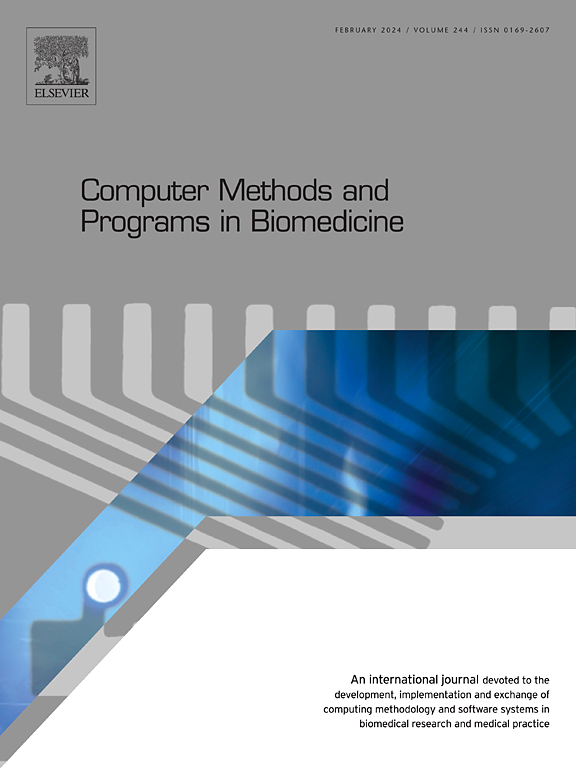Optimizing beat-wise input for arrhythmia detection using 1-D convolutional neural networks: A real-world ECG study
IF 4.9
2区 医学
Q1 COMPUTER SCIENCE, INTERDISCIPLINARY APPLICATIONS
引用次数: 0
Abstract
Backgrounds and objectives:
Cardiac arrhythmias, characterized by irregular heartbeats, are difficult to diagnose in real-world scenarios. Machine learning has advanced arrhythmia detection; however, the optimal number of heartbeats for precise classification remains understudied. This study addresses this using machine learning while assessing the performance of arrhythmia detection across inter-patient and intra-patient conditions. Furthermore, the performance–resource trade-offs are evaluated for practical deployment in mobile health (mHealth) applications.
Methods:
Beat-wise segmentation and resampling techniques were utilized for preprocessing electrocardiography (ECG) signals to ensure consistent input lengths. A 1-D convolutional neural network was used to classify the eight multi-labeled arrhythmias. The dataset comprised real-world ECG recordings from the HiCardi wireless device alongside data from the MIT-BIH Arrhythmia database. Model performance was assessed through fivefold cross-validation under both inter-patient and intra-patient conditions.
Results:
The proposed model demonstrated peak accuracy at four beats under inter-patient conditions, with minimal improvements beyond this point. This configuration achieved a balance between performance (94.82% accuracy) and resource consumption (training time: 72.27 s per epoch; prediction time: 155 s per segment). Real-world simulations validated the feasibility of real-time arrhythmia detection for approximately 5000 patients.
Conclusion:
Utilizing four heartbeats as the input size for arrhythmia classification results in a trade-off between accuracy and computational efficiency. This discovery has significant implications for real-time wearable ECG devices, where both performance and resource constraints are crucial considerations. This insight is expected to serve as a valuable reference for enhancing the design and implementation of arrhythmia detection systems for scalable and efficient mHealth applications.
使用一维卷积神经网络优化心律失常检测的心跳方向输入:一项真实心电图研究
背景和目的:心律失常,以不规则的心跳为特征,在现实生活中很难诊断。机器学习具有先进的心律失常检测;然而,精确分类的最佳心跳次数仍未得到充分研究。本研究利用机器学习解决了这一问题,同时评估了跨患者间和患者内部条件下心律失常检测的性能。此外,还评估了在移动医疗(mHealth)应用程序中实际部署的性能-资源权衡。方法:采用心跳分割和重采样技术对心电图信号进行预处理,确保输入长度一致。采用一维卷积神经网络对8例多标记心律失常进行分类。该数据集包括来自HiCardi无线设备的真实心电图记录以及来自MIT-BIH心律失常数据库的数据。在患者间和患者内部条件下,通过五倍交叉验证评估模型的性能。结果:所提出的模型显示了在患者间条件下4次心跳时的峰值准确性,在此之后几乎没有改善。该配置在性能(准确率为94.82%)和资源消耗(训练时间:72.27 s / epoch;预测时间:155 μs /段)。真实世界的模拟验证了实时心律失常检测的可行性,大约有5000名患者。结论:使用四次心跳作为心律失常分类的输入大小,可以在准确性和计算效率之间进行权衡。这一发现对实时可穿戴ECG设备具有重要意义,其中性能和资源限制都是关键考虑因素。这一见解有望为增强可扩展和高效移动健康应用的心律失常检测系统的设计和实施提供有价值的参考。
本文章由计算机程序翻译,如有差异,请以英文原文为准。
求助全文
约1分钟内获得全文
求助全文
来源期刊

Computer methods and programs in biomedicine
工程技术-工程:生物医学
CiteScore
12.30
自引率
6.60%
发文量
601
审稿时长
135 days
期刊介绍:
To encourage the development of formal computing methods, and their application in biomedical research and medical practice, by illustration of fundamental principles in biomedical informatics research; to stimulate basic research into application software design; to report the state of research of biomedical information processing projects; to report new computer methodologies applied in biomedical areas; the eventual distribution of demonstrable software to avoid duplication of effort; to provide a forum for discussion and improvement of existing software; to optimize contact between national organizations and regional user groups by promoting an international exchange of information on formal methods, standards and software in biomedicine.
Computer Methods and Programs in Biomedicine covers computing methodology and software systems derived from computing science for implementation in all aspects of biomedical research and medical practice. It is designed to serve: biochemists; biologists; geneticists; immunologists; neuroscientists; pharmacologists; toxicologists; clinicians; epidemiologists; psychiatrists; psychologists; cardiologists; chemists; (radio)physicists; computer scientists; programmers and systems analysts; biomedical, clinical, electrical and other engineers; teachers of medical informatics and users of educational software.
 求助内容:
求助内容: 应助结果提醒方式:
应助结果提醒方式:


